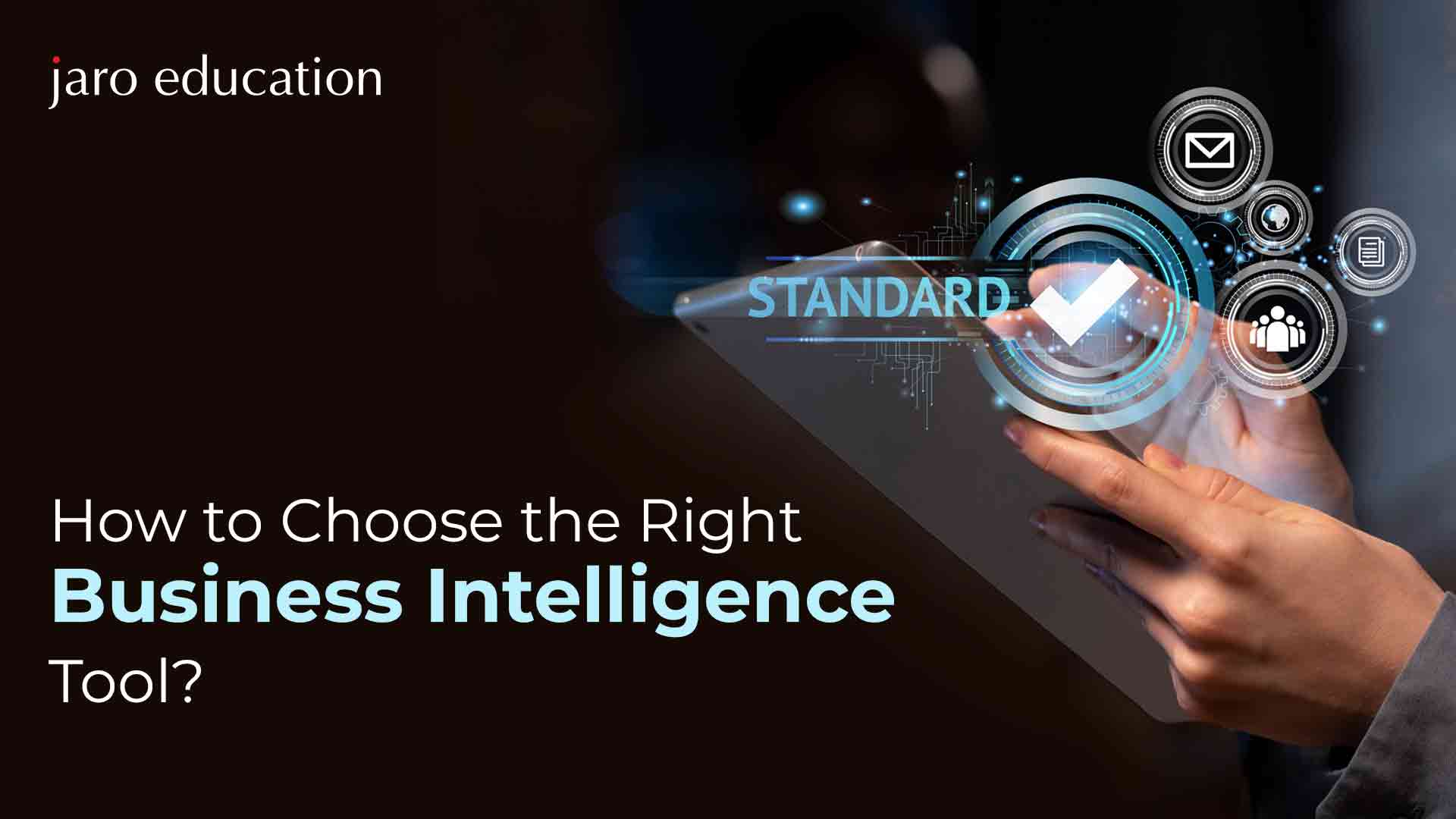
How to Choose the Right Business Intelligence Software for Growth: A Strategic Guide
In today’s data-driven world, businesses are constantly seeking ways to gain a competitive edge. The key to unlocking valuable insights lies in effective data analysis. This is where Business Intelligence (BI) software comes into play. Choosing the right BI software is crucial for sustainable growth. This comprehensive guide will explore how to choose the right business intelligence software for growth, providing a strategic framework for informed decision-making.
The selection process can be daunting. Many options exist, each with its unique features and capabilities. This article aims to simplify the process. It offers practical advice and actionable steps. Businesses can use it to find the perfect BI solution. This solution will align with their specific needs and growth objectives. We will dive into key considerations. These will help you navigate the complexities of the BI landscape.
Understanding the Importance of Business Intelligence
Before diving into selection, it’s important to understand the value of BI. BI software transforms raw data into actionable insights. These insights empower businesses to make informed decisions. This leads to improved operational efficiency. It also helps with strategic planning and better customer experiences.
Effective BI provides several key benefits. It reveals hidden patterns and trends. It also enhances decision-making processes. Furthermore, it helps optimize resource allocation. It also improves customer satisfaction. By leveraging BI, companies can gain a deeper understanding of their operations. They can also identify opportunities for improvement. This ultimately fuels growth and profitability.
Assessing Your Business Needs and Goals
The first step in choosing the right BI software is assessing your business needs. Define your specific goals and objectives. What are you hoping to achieve with BI? Are you looking to improve sales performance? Are you focused on reducing operational costs? Perhaps you aim to enhance customer satisfaction.
Consider the following questions:
- What data sources do you need to integrate?
- What types of reports and dashboards are essential?
- Who will be the primary users of the BI software?
- What level of technical expertise do your users possess?
- What is your budget for software and implementation?
Understanding your current data infrastructure is also critical. Evaluate your existing systems. Identify any data silos. Determine the volume and velocity of your data. These factors will influence the type of BI software. It also affects the implementation strategy.
Key Features to Look For in BI Software
Once you understand your needs, you can start evaluating BI software options. Certain features are essential for any effective BI solution. Consider these key features:
- Data Integration: The ability to connect to various data sources. This includes databases, spreadsheets, and cloud services.
- Data Visualization: Powerful tools for creating insightful charts and graphs. These tools will effectively communicate your findings.
- Reporting and Dashboards: Customizable reports and dashboards. These will track key performance indicators (KPIs).
- Data Analysis: Advanced analytical capabilities. These capabilities include predictive analytics and data mining.
- User Interface (UI) and User Experience (UX): An intuitive and user-friendly interface. This will make it easy for users to navigate and analyze data.
- Scalability: The ability to handle growing data volumes and user demands.
- Security: Robust security features to protect sensitive data.
Consider the specific needs of your business. Prioritize the features that align with your goals. Some BI software solutions offer more advanced features. These features may not be necessary for all businesses.
Evaluating Different Types of BI Software
The BI market offers a variety of software options. These cater to different business needs and technical capabilities. Understanding the different types of BI software can help you narrow down your choices.
- Traditional BI: These solutions are often on-premise. They require significant IT resources for implementation and maintenance. They typically offer robust reporting and analytical capabilities.
- Cloud-Based BI: These solutions are hosted in the cloud. They offer greater flexibility and scalability. They often have lower upfront costs. They are ideal for businesses of all sizes.
- Self-Service BI: These solutions empower business users to analyze data independently. They offer user-friendly interfaces and drag-and-drop functionality.
- Embedded BI: These solutions integrate BI capabilities directly into existing applications. They provide real-time insights within the context of your workflows.
Each type of BI software has its pros and cons. The best choice depends on your specific requirements. Evaluate the features, pricing, and support offered by each vendor.
Considering Implementation and Training
Choosing the right BI software is only the first step. Successful implementation is crucial for realizing its benefits. Consider the following factors during the implementation process:
- Implementation Time and Cost: Evaluate the time and resources required for implementation. Consider the costs associated with data migration and configuration.
- Data Integration: Ensure the software can integrate with your existing data sources.
- User Training: Provide adequate training for all users. Make sure they understand how to use the software effectively.
- Ongoing Support: Choose a vendor that offers ongoing support and maintenance.
Proper implementation and training are essential. They ensure users can leverage the software’s full potential. This will drive business growth. A well-implemented BI solution will become an invaluable asset.
Evaluating Vendor Reputation and Support
The vendor you choose is as important as the software itself. Research the vendor’s reputation. Read reviews and testimonials from other customers. Consider the following factors:
- Vendor Experience: How long has the vendor been in the BI market?
- Customer Support: What level of support does the vendor offer?
- Training and Documentation: Does the vendor provide training and documentation?
- Community and Resources: Does the vendor have an active user community?
- Scalability: Can the vendor support your future growth?
Choosing a reputable vendor with a strong support system is critical. It ensures you receive the assistance you need. This will help you maximize the value of your BI investment. A reliable vendor will also provide ongoing support.
The ROI of Business Intelligence Software
Investing in BI software can yield a significant return on investment (ROI). The specific ROI will vary depending on your business needs. It will also depend on the chosen BI solution.
Key benefits that contribute to ROI include:
- Improved Decision-Making: Data-driven insights lead to better decisions.
- Increased Efficiency: Automation and streamlined processes save time and resources.
- Reduced Costs: Identifying and eliminating inefficiencies reduces costs.
- Enhanced Revenue: Improved sales and marketing strategies increase revenue.
- Better Customer Experience: Understanding customer needs improves customer satisfaction.
Calculate your potential ROI by assessing the expected benefits. Compare them to the total cost of ownership. This includes software costs, implementation expenses, and ongoing maintenance. A well-chosen BI solution will deliver a positive ROI. It will also drive sustainable business growth.
Case Studies: Real-World Examples
To illustrate the impact of BI software, let’s examine some real-world examples. These case studies showcase how businesses across various industries have leveraged BI to achieve significant results.
Example 1: Retail. A retail chain implemented BI to analyze sales data. They identified slow-moving products and optimized inventory levels. This led to a 15% reduction in inventory costs. They also saw a 10% increase in sales.
Example 2: Healthcare. A healthcare provider used BI to analyze patient data. They identified at-risk patients. They also improved patient outcomes. This resulted in a 20% decrease in readmission rates.
Example 3: Manufacturing. A manufacturing company implemented BI to track production data. They identified bottlenecks and improved efficiency. This led to a 12% increase in production output.
These examples demonstrate the potential of BI. These case studies showcase how businesses can transform their operations. They can also achieve significant growth. These are achievable through data-driven insights.
Future Trends in Business Intelligence
The BI landscape is constantly evolving. Staying informed about future trends is crucial. It will help you make informed decisions. It will also help you stay ahead of the competition.
Some key trends to watch include:
- Artificial Intelligence (AI) and Machine Learning (ML): AI and ML are being integrated into BI. This enhances data analysis and predictive capabilities.
- Data Democratization: Making data and insights accessible to all users.
- Cloud-Based BI: The continued growth of cloud-based BI solutions.
- Mobile BI: Accessing BI insights on mobile devices.
- Data Governance: Ensuring data quality and compliance.
By staying informed about these trends, you can ensure your BI solution remains relevant. It will also continue to drive business growth. Keep an eye on these emerging technologies. They will shape the future of BI.
Final Thoughts: Making the Right Choice
Choosing the right business intelligence software is a strategic decision. It requires careful consideration of your business needs. It also requires evaluation of available options. By following the steps outlined in this guide, you can make an informed choice. This will help you select the best BI solution for your business.
Remember to assess your needs. Evaluate software features. Consider implementation and support. Also, research vendor reputation. The right BI software will empower your business. It will enable you to make data-driven decisions. This will ultimately drive sustainable growth. This will ensure long-term success. Effective use of business intelligence tools is essential.
Choosing the right business intelligence software is critical for growth. It provides valuable insights. It also empowers data-driven decisions. This is how to choose the right business intelligence software for growth.

